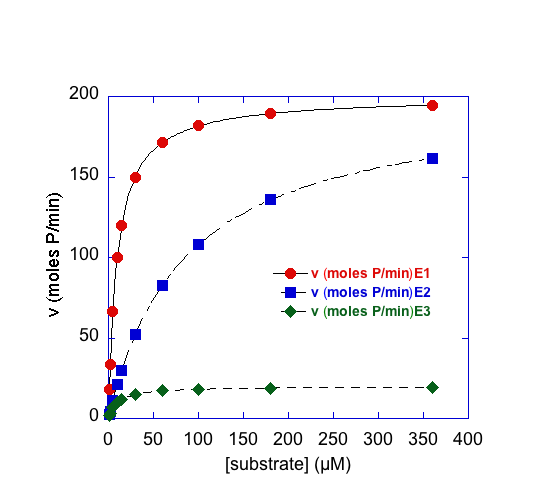Enzyme Kinetics Assay
Overview
Teaching: 60 min
Exercises: 270 minQuestions
How can quantitative values be obtained for an enzymatic reaction?
Objectives
Students will use a spectrometer to measure rates of the enzyme-catalyzed reaction.
Students will determine the optimum conditions for your assay (pH, temperature, salt concentration, substrate concentration range, enzyme concentration range).
Students will apply graphical analysis to relate rate of changing substrate/product concentration to enzyme-specific parameters: KM and Vmax.
Students will determine the best substrate for your enzyme based on substrate specificity data.
 Protein kinetic assays are used to quantify the process of enzymatic conversion of a substrate to a product. This quantification provides very useful data towards understanding specificity of enzymes towards their substrates. Kinetic assays also help identify inhibitors and lead to enzyme mechanism information. This module describes the process for obtaining kinetic data for both chymotrypsin and a protein of interest for cleavage of para-nitrophenylacetate to obtain KM and Vmax values.
Protein kinetic assays are used to quantify the process of enzymatic conversion of a substrate to a product. This quantification provides very useful data towards understanding specificity of enzymes towards their substrates. Kinetic assays also help identify inhibitors and lead to enzyme mechanism information. This module describes the process for obtaining kinetic data for both chymotrypsin and a protein of interest for cleavage of para-nitrophenylacetate to obtain KM and Vmax values.
Module Resources
Key Points
Determining kinetic parameters for the enzyme of interest can indicate the best substrate(s) for the enzyme and consequently provide insight into its function within an organism.